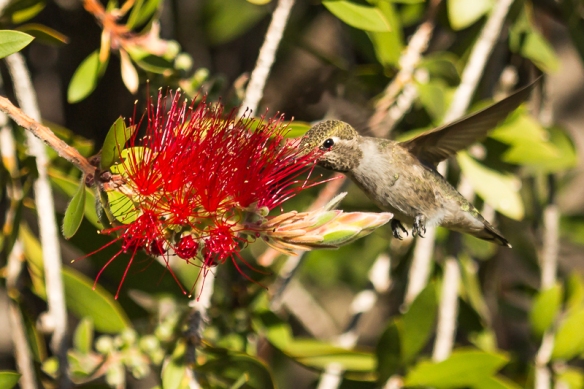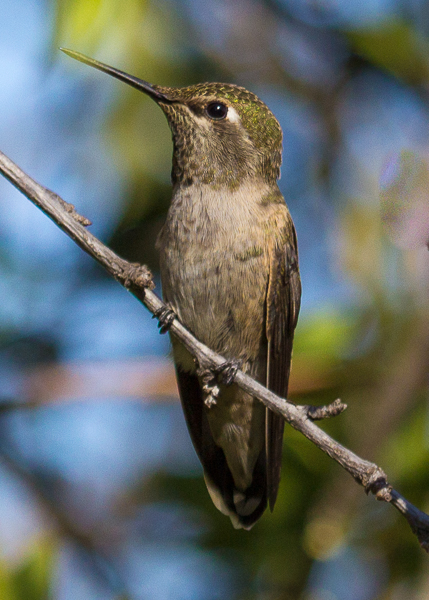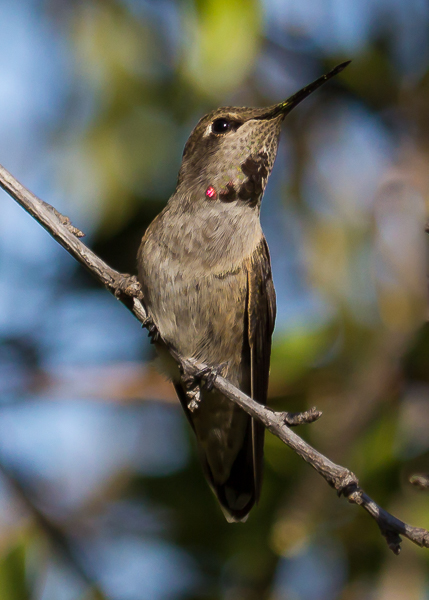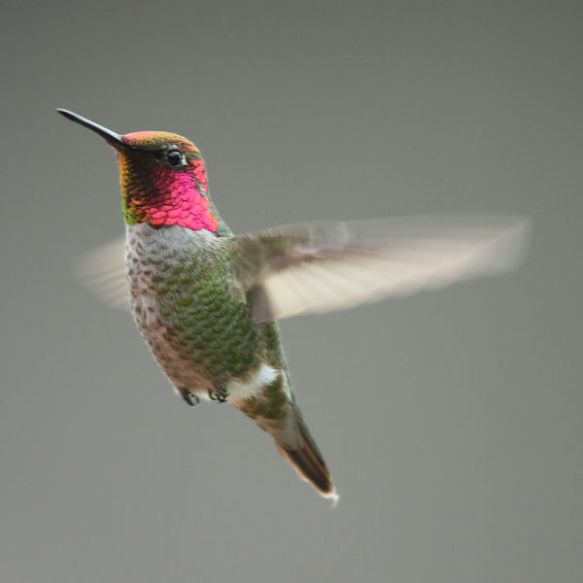Ah, to be back in the warmth and sunshine of northern California, where the roses are blooming and the birdies are singing. I was entertained by a very territorial Anna’s Hummingbird trying to assert control of a profusely blooming Bottlebrush shrub in my mother-in-law’s backyard. The bird sat in the shade of the Bottlebrush “singing” a raspy chortle and making a long train of clicking sounds. It chased, it buzzed over my head and in front of me (too close for my telephoto to focus), and then fed intermittently from the bottlebrush flowers.

I was close enough to actually see its throat moving as it sucked nectar deep from the interior of this complex flower plume.
Exotic flowering plants have thrived in California with its mild Mediterranean climate, providing Anna’s Hummingbirds — the most common of the western hummers — with ample supplies of nectar almost year-round. Bottlebrush, a member of the Myrtle plant family, is endemic to Australia, but once introduced, has thrived in California backyards as a decorative plant.

This feisty little bird had about three different stations in the backyard from which it patrolled and defended its territory.
Males and females look much alike having a drab gray breast with emerald green back and head feathers. The big difference is the brilliant magenta gorget of neck feathers in the male, only seen when the light strikes them just right.

Those almost circular-shaped neck feathers that appear to be black are actually filled with air spaces and multiple layers of transparent to semi-transparent plates that reflect light of particular wavelength — in this case, hot pink.
For a more thorough discussion of the optics of iridescence, with colorful examples of its uses in birds, see an earlier post here.

The smaller gorget in this bird probably means it is in fact a female, even though the intense territorial defense it exhibited made me think at first it was a male.

The brilliant gorget of the male Anna’s Hummingbird wraps around its throat like a scarf. There is no mistaking this bird’s sex. Photo from Wikipedia by Alan Vernon.


Stunning pictures, Sue!
Just to understand; Can the hummingbird produce the color at will or is it always there and seen only when lighting hits it just right (because of the plates)?
It’s always there, except when those particular feathers are being molted (probably at least once a year). And Yes, it can only be seen when the light hits it just right.
Excellent!
Thanks Walter!
Love that iridescent gorget. Beautiful photos.
So, I entered keywords “drab gray feisty hummingbird” into Google, trying to find out what species I’ve been dive bombed by twice and who it was that stared me down today, hovering eye-to-eye, as I watered a basket of flowers on the stand that also supports the nectar feeder.
Now I know. Thanks! From now on I’ll be wearing my +1 armor when I go out to do the watering. Gawd knows what’s going to happen when I take down the feeder to clean and refill!
Hah! They are bold, those hummers. And they will defend their nectar sources vigorously, human or not.